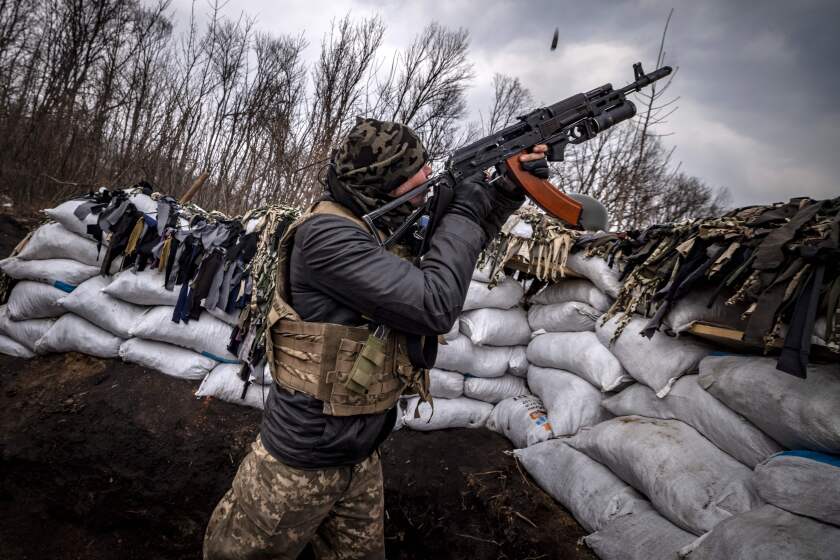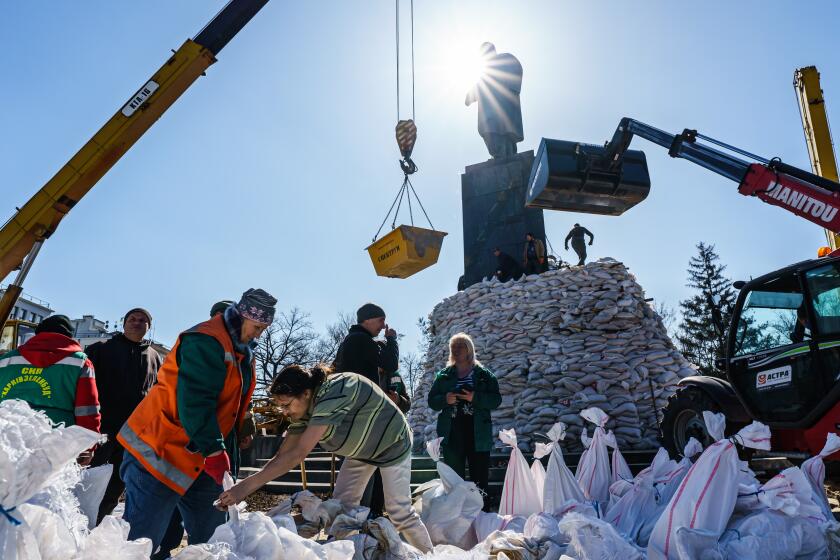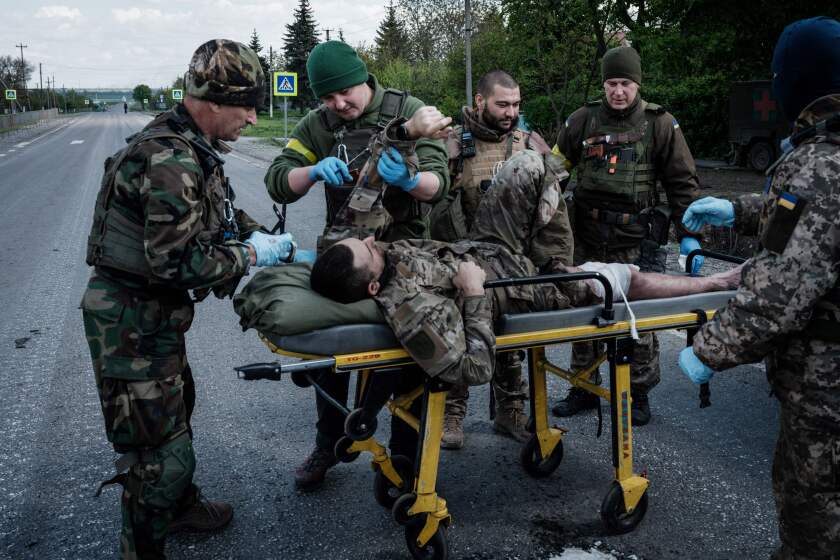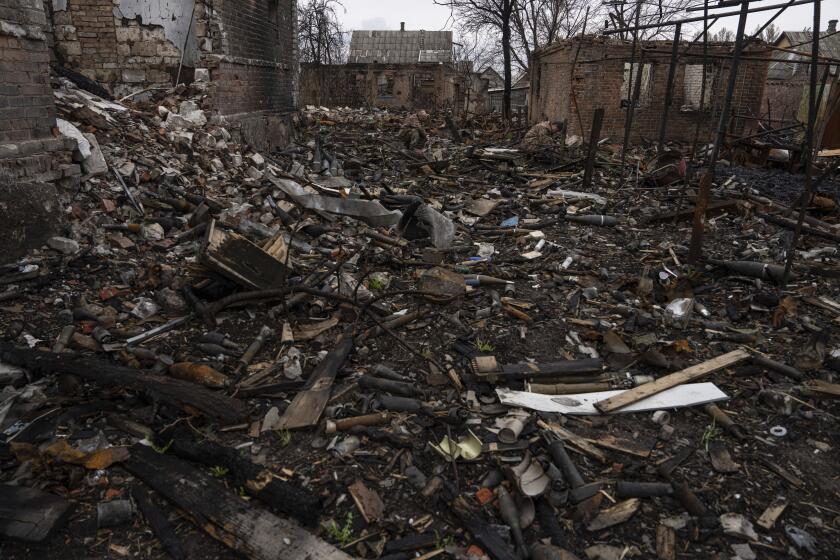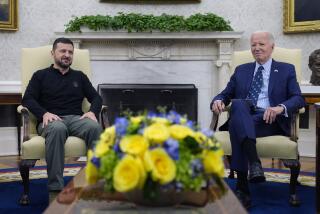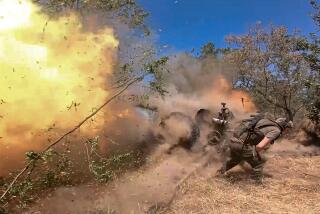Opinion: Should the U.S. empower Ukraine with F-16s? Biden must decide
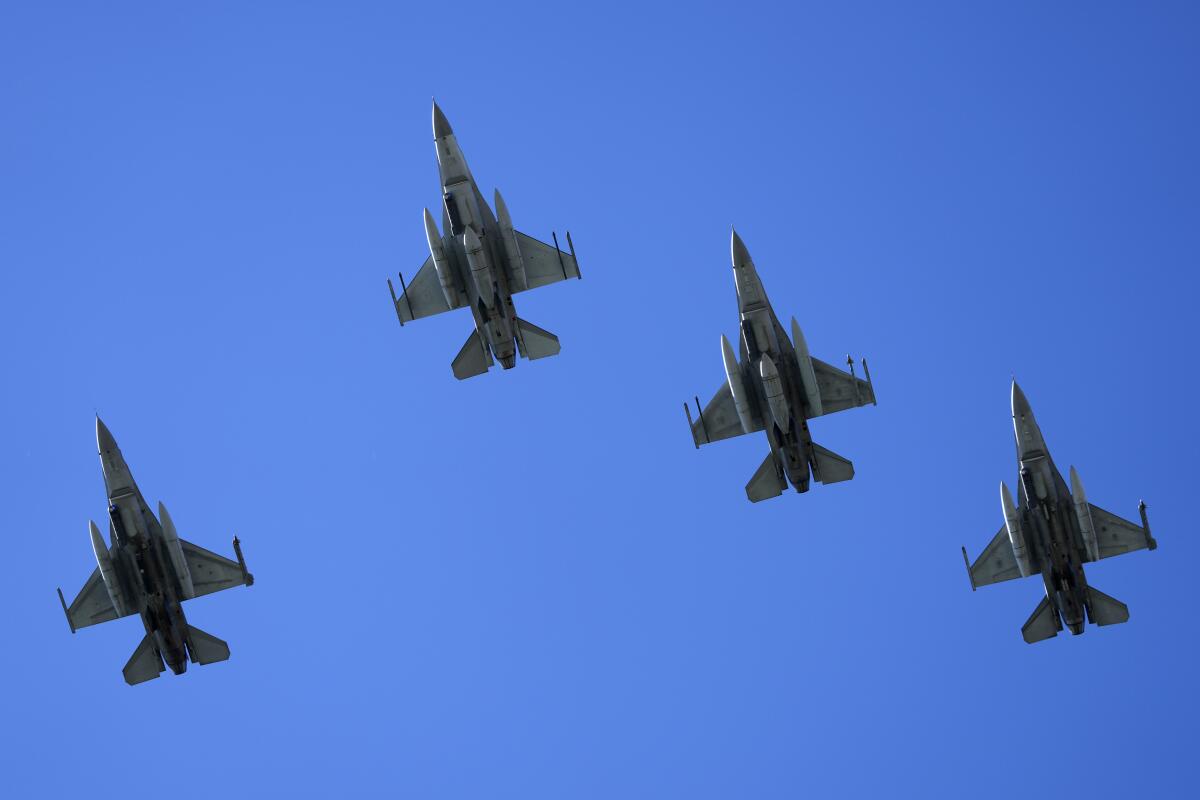
President Biden has a decision to make at this moment in the Ukraine war. Its outcome will not be determined only by the spirited resilience of the Ukrainian people. The deciding factor is likely to be how much support allies extend, and when.
Over the past decade, America’s military support has allowed Ukraine to survive and fight back against Russia’s incursions and attacks. From blankets, uniforms and night-vision goggles under then-President Obama to Javelin antitank missiles under then-President Trump to HIMARS multiple rocket launchers, Patriot anti-missile complexes and M1 Abrams battle tanks under President Biden.
Ukrainians are also painfully aware that international support so far has not stopped Russian leader Vladimir Putin’s relentless deadly attacks on their country.
Not supplying these weapons earlier was actually provocative to Putin. That allowed him to wage a missile war on Ukrainian population centers in hopes of beating Ukraine into submission.
While Ukraine reclaimed about half of the territory Russia took early in 2022, the Russian military regrouped, mobilized hundreds of thousands of troops and leveraged its vast superiority in artillery and air power to stall Ukrainian advances and to pin down its forces in horrific, intense battles across eastern Ukraine, notably around Bakhmut.
Every day for months, aside from 30 to 100 assaults and hundreds of bombardments along the eastern Ukraine ‚Äúarc of fire,‚ÄĚ Russia has bombarded 40 to 60 Ukrainian cities, town and villages in its northern and southern provinces. With numbers and scorched-earth tactics, Russia keeps inching into Ukrainian territories and adding miles of antitank ‚Äúdragon teeth‚ÄĚ defense lines and bunker-style defense positions throughout the occupied lands.
The Kremlin seems confident that over time Russia will overwhelm its target’s defenses and that Kyiv’s allies in the West will lose resolve. The stakes go far beyond who controls Ukraine. If successful, Russia will increase its capacity to challenge NATO directly in Europe, to influence resource-rich African states and to enable China’s territorial expansion.
Above all, the war is about Russia trying to gain control over Ukrainian identity and history. In that, Putin has failed.
Air superiority is likely to be decisive. Over the last two months, based on Ukraine’s military reports, Russia’s warplanes have been carrying out 30 to 40 attacks daily, while Ukraine has responded with only 10 to 15. Russia has the capacity to widen this advantage. According to the Flight International almanac, Ukraine’s air force numbered 43 MiG-29 Fulcrums and 26 Su-27 Flankers by late 2022. Meanwhile, the same source reported that Russia retained about 370 MiG-29, -31 and -35 fighters and 350 Su-27, -30 and -35 fighters. If Ukraine’s counteroffensive stalls inside the newly erected defense lines, this air superiority could enable Russia to destroy Western military equipment given to Ukraine; decimate and demoralize Ukrainian forces; and clear a path for a renewed invasion to bring most of Ukraine under Moscow’s rule.
In this context, I hope the Biden administration heeds the calls of bipartisan groups of U.S. senators and representatives to provide Ukraine with advanced fighter aircraft. Combined with other support, this is an opportunity to turn the tide of war and decisively signal to Russia that its military campaign is futile.
Biden may have held back such aircraft to avoid prompting the most-feared escalation: a Russian nuclear response. But the U.S. need not restrain support over that concern. For Putin’s current war of attrition to succeed, global attention to Ukraine must decline and assistance fatigue must set in. If he uses even tactical nuclear weapons in response to Ukraine’s improved battlefield performance, Ukraine is guaranteed to return to center stage and receive untold military assistance swiftly. Moreover, even China, Moscow’s most powerful sympathizer, has insisted that the use of nuclear weapons would be unacceptable.
Knowing when to sit down at the table is tough. For the moment, Ukraine needs to keep fighting hard ‚ÄĒ while laying the groundwork for the inevitable negotiations with Russia.
We also don‚Äôt need to fear escalation of conventional warfare. Russia already ‚Äúescalated‚ÄĚ in February 2022 when it invaded, and it doesn‚Äôt have the capacity to mount another all-out attack on land. At sea and in the air, its capabilities are no match for NATO‚Äôs. Even excluding the U.S., other NATO members have about twice as many fighter jets as Russia does.
Sending U.S.-made fighter jets such as F-16s would be a credible signal of our resolve to support Ukraine, precisely because it will be costly. According to the Pentagon’s policy chief, Colin Kahl, it would cost about $3 billion to provide Ukraine with just three dozen F-16s, which would deplete congressionally allocated funding. But this expense would be incomparably less than the cost of a protracted global standoff between the U.S. and Russia, or their proxies, if Russia retains its territorial gains in Ukraine and freezes the conflict.
If the U.S. musters political will to support Ukraine with fighter jets, logistical barriers should be relatively easy to overcome. Ukrainian officers have proved to be competent, fast learners. They can train to fly American jets rather than MiGs. And although Ukraine’s airfields might not be perfect for F-16s, other systems can be provided in addition, including more rugged F-18s, Sweden’s Gripen, France’s Rafale and Europe’s Eurofighter.
Reports of torture and rape by the military are all too common in the last century of Russian conflict.
We have formed a solid working relationship with the Ukrainian leadership and the military. They have every reason to coordinate targets with us and not to senselessly attack deep inside Russia. When Ukraine has the capacity to bombard Russia and is choosing not to, Moscow will see that its own tactics have limits and could backfire. We saw this pattern last year after Ukraine deployed longer-range missiles that sank Russia’s Black Sea flagship, the Moskva cruiser.
After that April 2022 strike, the Kremlin pulled back its largest and most capable remaining warships into harbor and moved a significant number of ships 200 miles east from the main base in Sevastopol. These pullbacks enabled Ukraine to regain the strategic Snake Island south of Odesa and to liberate Kherson, an important Black Sea port.
Providing advanced fighter jets will also show that Biden‚Äôs daring visit to Kyiv earlier this year built deep mutual confidence ‚ÄĒ and that when Biden said he looked President Volodymyr Zelensky in the eye and trusted him, he meant it.
Mikhail Alexseev, a professor of international relations at San Diego State University, is the author of ‚ÄúWithout Warning: Threat Assessment, Intelligence, and Global Struggle.‚ÄĚ
More to Read
A cure for the common opinion
Get thought-provoking perspectives with our weekly newsletter.
You may occasionally receive promotional content from the Los Angeles Times.
